Merchandising is more than an aesthetic for your online store. Executed well, it directly impacts your conversion rate and bottom line. Merchandise to gain control over what shoppers see and the power to align product display with your campaign goals.
Follow these merchandising best practices to get the right product in front of the right shopper at the right time and maximize your conversions.
Merchandise by Boosting Your Highest Converting Products
Need a quick and easy way to increase conversions? Use merchandising boost rules to elevate best sellers and high-converting products to the top of search and category pages. By instantly highlighting your most reliable performers, shoppers quickly spot the products they are most likely to buy.
You can also use this type of feature to merchandise trending products like Pair of Thieves. By letting people know what’s popular, they add value and urgency. As an added bonus, it helps guide visitors who may be shopping for gifts and not familiar with the products your site sells.
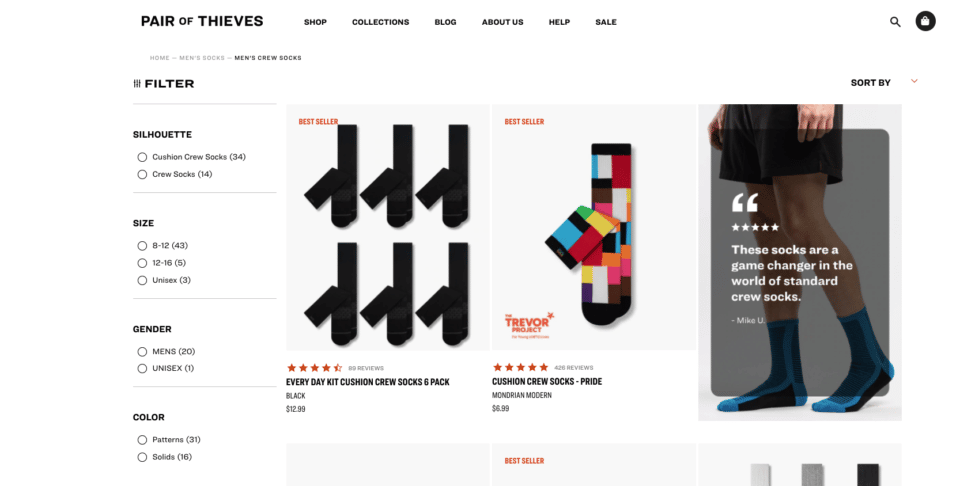
Pair of Thieves Boosts Best Sellers
Hide Out-of-Stock Results
Don’t waste valuable real estate on out-of-stock products. If shoppers are forced to scroll through endless rows of items that aren’t available for purchase, conversion rates suffer. Use boost rules to dynamically remove or push down these products from search and category pages. Not only does this benefit conversions, it also reduces bounce rates and prevents shopper frustration.
Clothing boutique, Lime Lush, effortlessly pushes out of stock items to the bottom of the page to provide a better shopper experience to their customers.
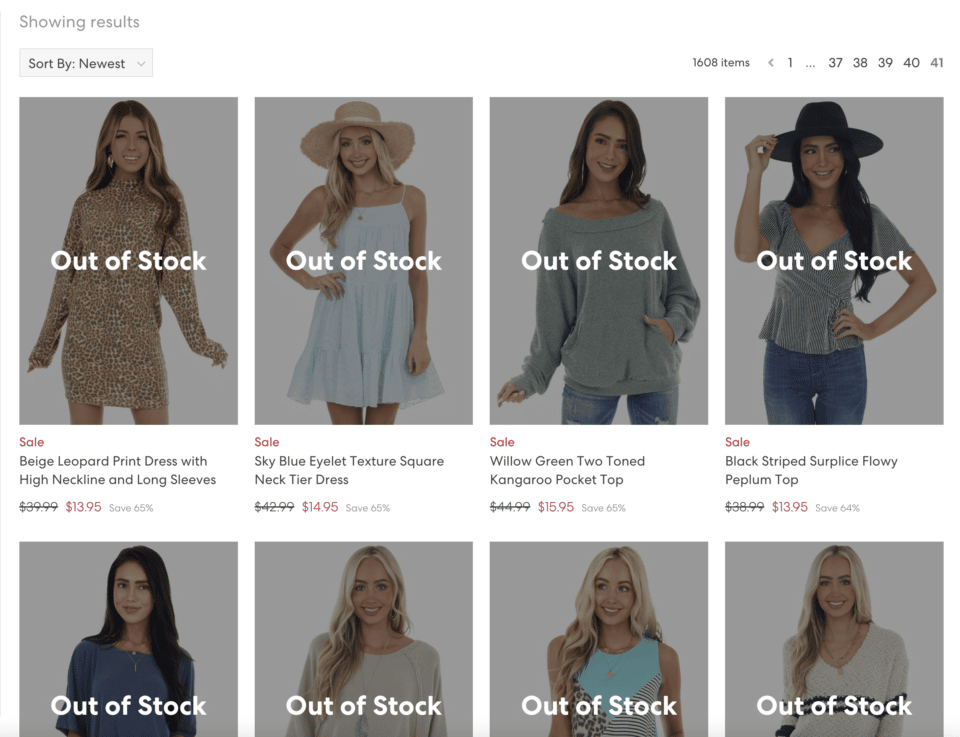
Lime Lush Pushes Out-of-Stock Items to the Bottom of Pages
Create Urgency with Banners
Use merchandising banners to draw shoppers’ attention to sales, offers, or limited time deals. This form of merchandising creates a sense of urgency and boosts conversions on irresistible offers. Badges can also be used to spotlight products that are selling fast, back in stock, or trending now. Much like an eye-catching in-store display, this approach can prompt impulse buys and higher cart values.
Brands like Fabletics and Savage X Fenty make great use of banners to highlight sales, collections, and special VIP offers.
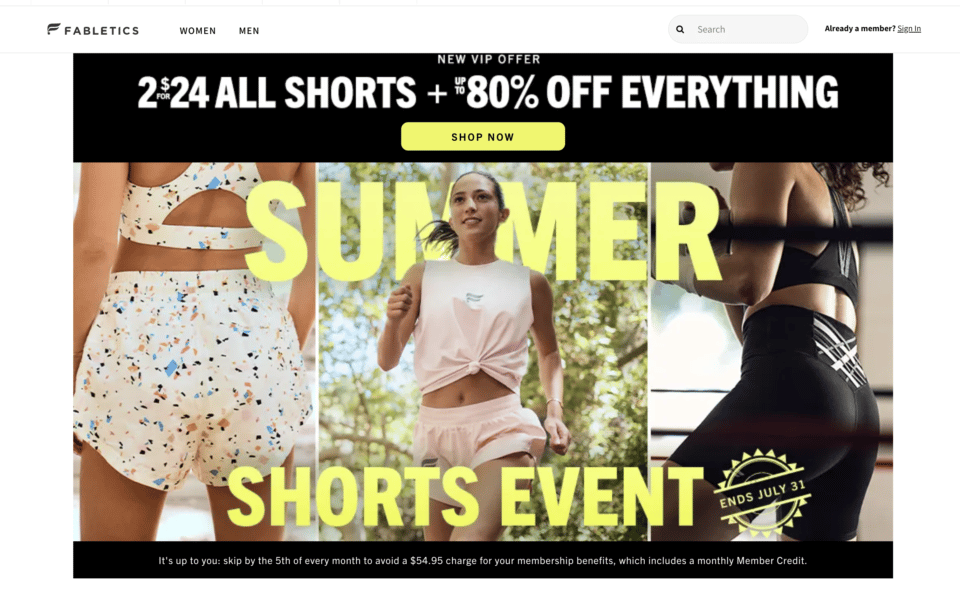
Fabletics Promotes Sales and VIP Offers
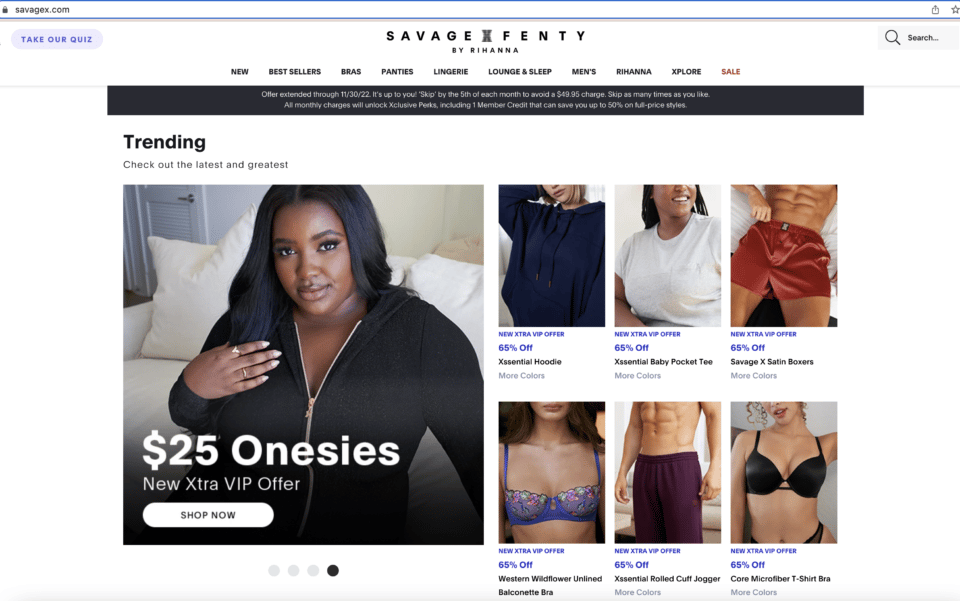
Lingerie brand, Savage X Fenty Highlights VIP Offers
Curate Campaign Landing Pages
Planning a Black Friday sale? Want to showcase your new season stock? Support off-site marketing campaigns with on-site merchandising. Make dedicated landing pages with the same products that are featured in email communications, social media posts, and display advertising. In addition to highlights on the homepage, merchandised landing pages give shoppers a relevant destination for campaign traffic – getting shoppers one step closer to conversion.
Men’s clothing store, Chubbies, features collections on their landing page and guides shoppers to a landing page with items from that collection. This leads to a better experience for shoppers by cutting down on time searching for each item.
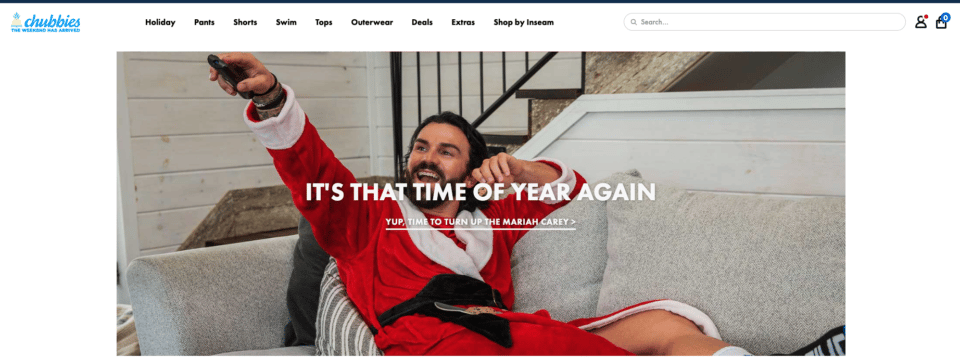
Chubbies Homepage Featuring Holiday Items
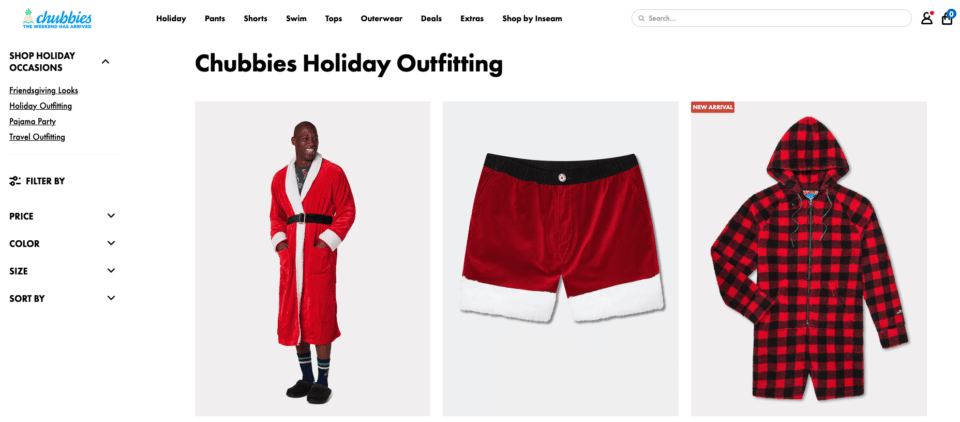
Chubbies Holiday Collection Landing Page
Merchandise for Shopper Behavior
Review ecommerce reports to make merchandising decisions based on data from actual shopper behavior. To start strategizing, look at visitor patterns. If you notice a high rate of repeat customers, for example, use merchandising rules to update category pages with new arrivals. On the other hand, if you attract a lot of new or one-off shoppers, try boosting best sellers.
Australian clothing brand, The Upside, uses shopper behavior to determine what shoppers are looking for. With a loyal customer base, they know how important it is to let visitors to their site know what is new so casual fashionista’s can keep their wardrobe fresh.
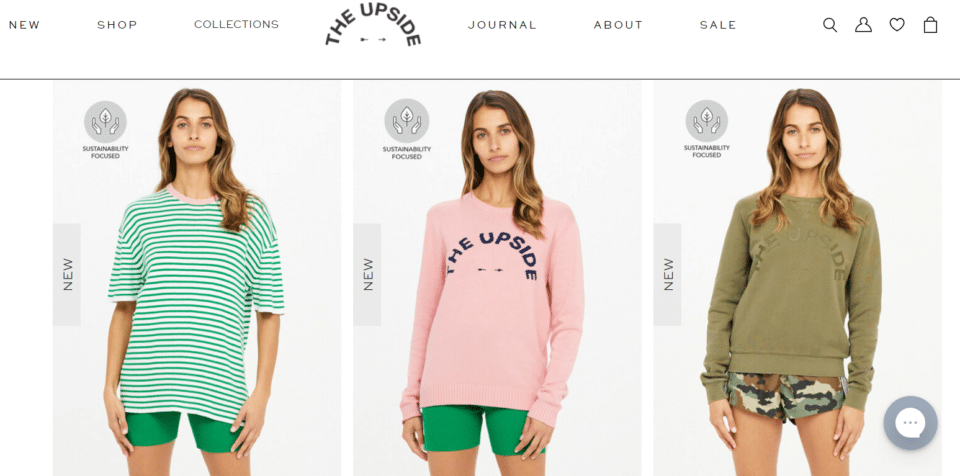
The Upside Features New Products
Merchandise for Shopper Location
In any given month, do your customers in Florida buy the same products as your customers in Minnesota? Whether you sell clothing, sporting goods, or outdoor furniture, your shoppers’ preferences vary significantly by location. This is especially true if you sell in different states, countries, or even hemispheres. Tailor product displays with geo-merchandising to improve product relevancy and increase the likelihood of a quick conversion.
Known for casual, comfy flip flops, shoes, and apparel, Reef tells shoppers what is trending in each city. While flip flops were still trending well into October in San Antonio, closed toe shoes and hoodies were trending in Northern states.
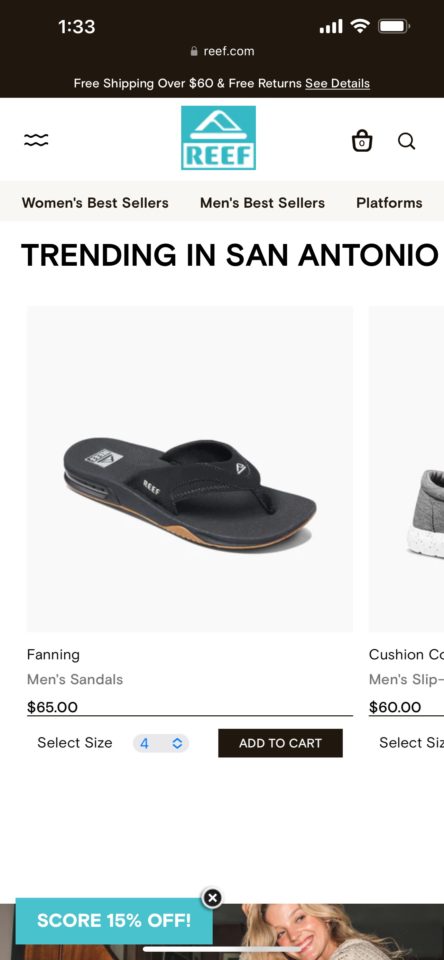
Flip Flops Still Trending in Warm Weather States
Make it Personal
No two shoppers are the same, so why apply the same boost rules to every user? Personalized search and merchandising adjusts results to each individual shopper based on their unique preferences and behaviors. For a truly customized shopping experience, combine this merchandising strategy with personalized recommendations.
Two brands that do personalization really well are Pearl iZumi and Peltz Shoes. Pearl iZumi makes personalized recommendations based on previous behavior, while Peltz Shoes takes it a step further with personalized search and merchandising. In the example below, Peltz Shoes search results is based on the shoppers previous behavior. This shopper has a history of searching for athletic sandals, so a basic “sandals women” search returned results with sporty styles populating first – making the experience extra personal and relevant.
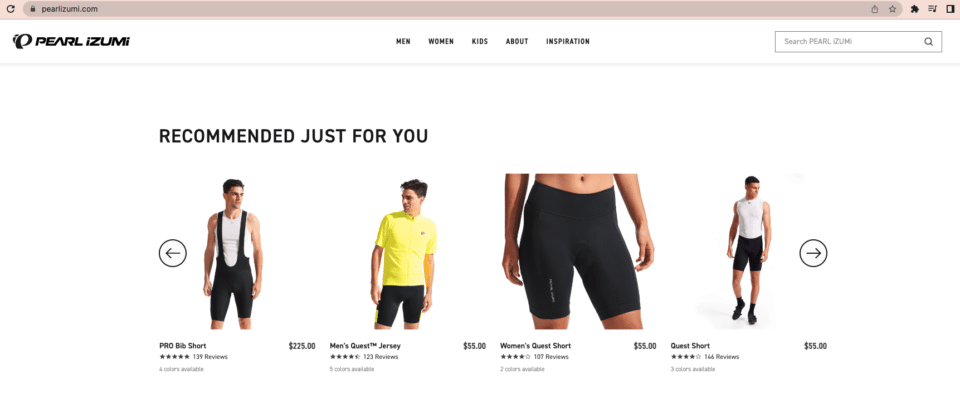
Pearl iZumi Personalized Recommendations
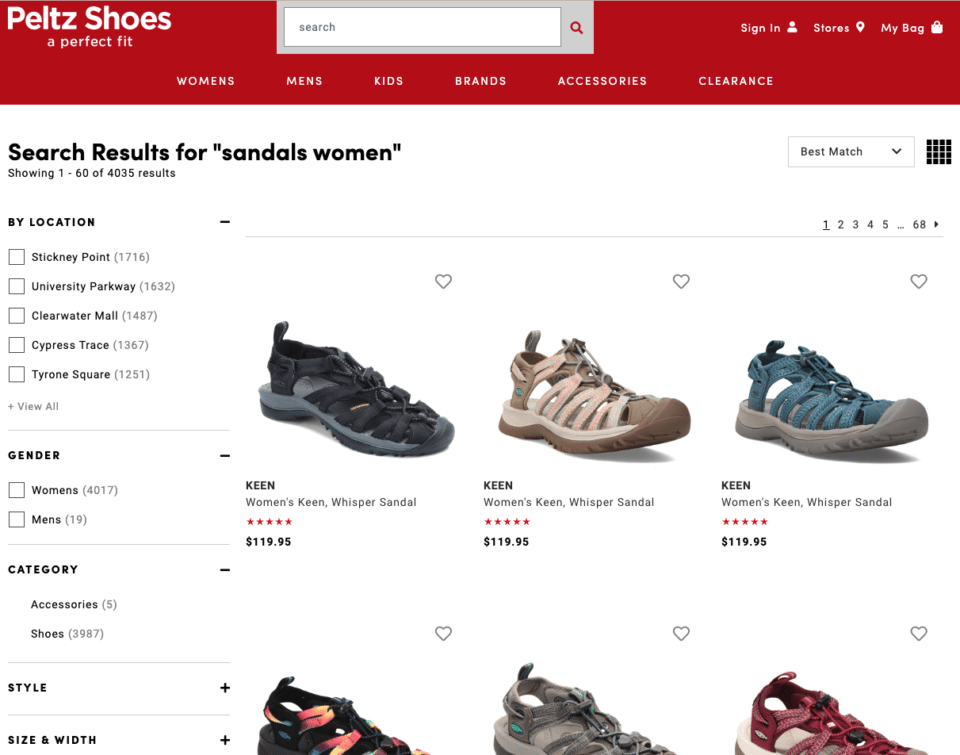
Peltz Shoes Personalized Search and Merchandising
Make Merchandising Work For You
Merchandising is an indispensable tool in your conversion optimization kit. Get strategic with boost rules, banners, geo-targeting, and personalization to get the most out of your merchandising strategy.
Most native ecommerce platforms don’t offer this level of merchandising and personalization, so you’ll need to invest in a tools that help optimize your site. There are free plugin’s as options, however, if your site requires something more powerful and easy-to-use with continued support, include these solutions in your budget. Monthly costs are usually reasonable and they will provide you with everything you need to convert more.




